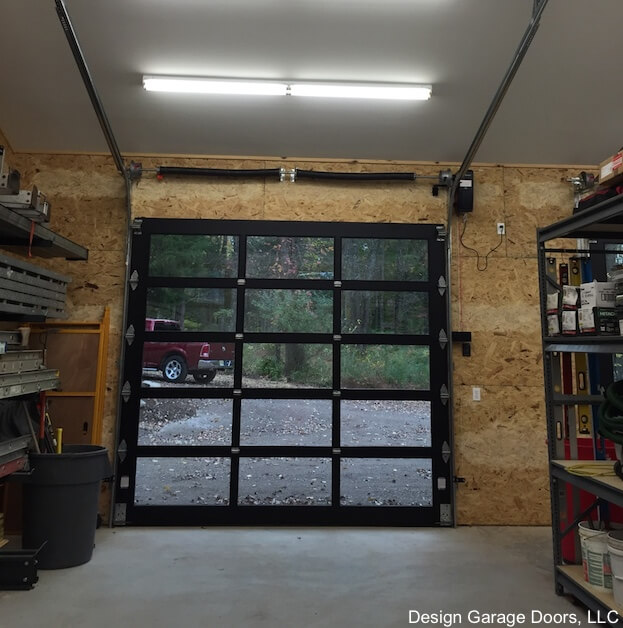Garage Door Spring Repair & Replacement
This article is reprinted from this website, for more details, please refer to this blog
A garage door is one of those home elements many of us take for granted, but just like your lawn or floors, it needs occasional maintenance. The one aspect of your garage that requires the most attention is its torsion spring. The center-mounted spring wears over time and will have to be replaced.
Continue reading to see what the typical garage door spring repair cost is and how you can complete this challenging project.
Garage Door Spring Repair Cost
According to our garage door repair cost estimator, the average price to replace a garage door is $202. However, this average includes a variety of projects ranging from fiberglass repair, faulty cables or broken panels. Given that springs almost always require a garage door professional and are quite dangerous to repair, the average tends to climb closer to $300.
Note: Most garage door repair companies charge at least an hours labor no matter the problem, so expect to pay whatever their minimum price is for any repair.

When to Replace Garage Door Springs
Unlike many other home remodeling projects, it’s very easy to tell when you need to replace your garage door spring. First and foremost, your overhead garage door won’t open. While this could be an electronic or physical door issue, the spring is a likely culprit.
However, the most obvious sign you need to replace your garage door spring is the weight of the door. When your spring is working correctly, you should be able to manually lift the garage door very easily. Likewise, when you open it, the garage door should not move and stay where you left it. If the garage door is very heavy or it closes as soon as you let go, then you need a new spring.
How to Fix A Garage Door Spring
Before we move forward, active DIYers must know that this can be a dangerous project to complete on your own. The tension in these springs is extreme and could easily cause an injury if not removed properly.
If you'd rather be safe than sorry, click here and get connected with up to four garage repair pros for free.
Nonetheless, the DIY in us willingly accept challenging projects and therefore, we oblige.

Let’s Get Started
First off, always follow your garage door’s safety precautions to the letter. The process could be different depending on your garage type, such as wood or steel. To remove the old springs and tension the new ones, you'll need two steel rods (check your installation instructions for the sizes). Never use rebar or screwdrivers. Make sure the rods are at least 18 inches long and always stand to the opposite side when you work. Never work directly in front of the garage door springs.
Relieve the Tension
Disconnect the garage-door opener and lock one side of the door in its track. Then, set up the ladder to one side of the spring fitting (not in front of it) and insert a winding rod into the fitting and slowly apply pressure to the spring. With the winding rod taking the torsion load of the spring, loosen the set screw fasteners and turn the rod a quarter turn. Insert the second winding rod (now holding the tension) and then remove the first rod and back off another quarter turn. Repeat this procedure until the spring tension has been released. It will take awhile. If you have a second spring, move onto that spring.
With the spring loosened, it’s safe to take the drums off and remove the old springs from the bar.

In With the New
Next, assemble the torsion-bar components. Slide the springs onto the rod from each direction, followed by the cable drums. Then, put the outside drum back on. Make sure it is the correct drum for the correct side. Sometimes, there will be black and red marks on them. Black is right and red is left. The same holds true for springs themselves. If you have two, one will have a black edge and the other will be red.
Lift the bar onto the horizontal track brackets and install the end bearings. Each bearing bracket will bolt directly to the top of a horizontal track's angle bracket. Next, level the center of the bar and install the center bracket. In addition to supporting the rod, this bracket locks the stationary ends of the springs together. Finish by running the cables from the bottom panel brackets to the cable drums on the torsion bar.
Finally, tighten the spring. Once again, be very careful. Use two rods and turn a quarter of a turn each time. Four turns equal one rotation. The number of rotations depends on the height of your garage. Each foot adds one rotation. Therefore, if your garage is seven feet high, you need seven full rotations or 28 quarter rotations.
Finish the job by reconnecting the garage-door opener.
To see how it’s all done, please watch our friends at Garage Door Nation below.
If you are looking to replace the entire door, please see Garage Door Replacement.
Conclusion
Garages need to be maintained and the No. 1 culprit of garage issues are the springs. If you do decide to replace them yourself, exercise great caution. It is a dangerous project not recommended for a DIY beginner.
If you need assistance on your garage door spring, click here and get connected with up to four garaged door pros near you.

